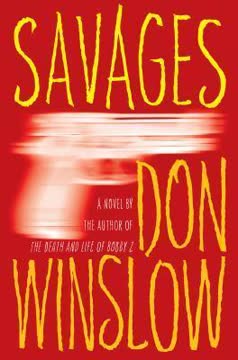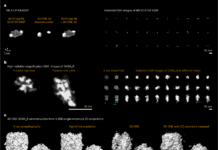In the realm of contemporary crime fiction, few novels have sparked as much debate and interest as Don Winslow’s Savages.celebrated for its raw intensity and intricate portrayal of the California drug trade, the novel weaves a narrative that blends brutality with moments of unexpected humanity. delves beneath the surface of Winslow’s adrenaline-fueled storytelling, exploring the complexities that make this work both gripping and controversial. This review aims to dissect the layers of Winslow’s novel, offering a balanced outlook that appreciates its literary merits while critically examining the themes and techniques that define its unflinching portrayal of crime and loyalty.
Exploring the Dark Underbelly of Southern California in Savages and Its Vivid Portrayal of Crime and Violence

The portrayal of this dark ecosystem is enriched by an array of complex players, each entangled in the gritty underworld in unique ways. Key elements that set the tone include:
- Raw depictions of drug trafficking that expose both the glamour and horror behind the trade.
- Multifaceted villains whose motivations extend beyond mere greed, adding layers of psychological depth.
- Scenes of visceral violence that underscore the destructive consequences of power struggles.
| Aspect | Impact |
|---|---|
| Setting | transforms luminous locales into haunting backdrops |
| Characterization | Shows moral ambiguity and survival instincts |
| violence | Conveys realism and the raw stakes involved |
The Complex Web of Friendship and Rivalry That drives the Intense Narrative Forward

In Savages, Don Winslow masterfully entangles his characters in a labyrinth of alliances and betrayals, where loyalty is as volatile as the drugs they traffic. The narrative thrives on the delicate balance between friendship and rivalry, often blurring the line so finely that trust becomes a rare commodity. Chief protagonists Ben and Chon are inseparable in their mission, their bond forged through common goals and shared dangers, yet their relationship is continuously tested by external threats and internal conflicts. Meanwhile,the enigmatic and fiercely self-reliant O enters as both an ally and a wild card,challenging their dynamics and injecting tension that propels the storyline into unexpected terrain.
Key elements driving this complex interplay include:
- Mutual dependency: each character depends on the others for survival, creating a precarious equilibrium.
- Power struggles: Control over territory, trust, and resources constantly shifts, leading to fractures and uneasy truces.
- hidden agendas: Everyone harbors secrets, and betrayals often lie just beneath the surface.
| Character | Allegiance | Primary Motivation |
|---|---|---|
| Ben | Partner | Protecting friendship & business |
| Chon | Partner | Loyalty to friends & family |
| O | Wildcard | Independence & revenge |
| El Blanco | Adversary | Power & control |
This intricate web doesn’t just drive the plot but paints a realistic portrayal of human connection under pressure, where allies can morph into enemies overnight, and rivalries frequently enough hide deeper bonds of respect and understanding. Winslow’s storytelling thrives on these emotional contradictions, making the narrative pulse with a raw, unpredictable energy that keeps readers perpetually on edge.
An In-Depth Analysis of Winslow’s Authentic and Gritty Dialogue Capturing Street-Level Realities

winslow employs dialogue as a mirror reflecting the characters’ internal and external conflicts,revealing much about their motivations and vulnerabilities. Key elements include:
- street slang and vernacular: Grounding the story in its milieu with linguistic precision.
- Rapid-fire exchanges: Simulating the urgency and volatility of illicit dealings.
- Double meanings and coded speech: Highlighting the characters’ constant need for guarded interaction.
| Dialogue Feature | Narrative Impact |
|---|---|
| Colloquial Language | Authenticity & relatability |
| elliptical Sentences | Builds Tension & Pacing |
| Implicit Threats | Conveys Underlying Danger |
| Humor & Sarcasm | Humanizes Characters Amid Chaos |
How drug Culture Shapes Characters’ Motivations and the Story’s Tense Atmosphere
In Savages, the pervasive influence of drug culture isn’t just a backdrop but a powerful force that molds every character’s decisions and desires. The relentless push-pull of addiction, power, and survival skews moral compasses and fuels a labyrinthine web of alliances and betrayals.Characters frequently enough find themselves trapped between ambition and desperation,their motivations sharpened by the high stakes of the narcotics underworld. This duality creates multifaceted personas-some driven by greed, others by a twisted sense of loyalty-reflecting the unpredictable volatility inherent in such a world.
The narrative’s taut tension is amplified through sharp contrasts and constant threats that spring from the drug trade’s brutal environment. This atmosphere thrives on uncertainty and imminent danger, with each encounter poised on a knife’s edge. Consider the following elements that sustain this pressure:
- unforgiving alliances: Shifting loyalties ensure no one is entirely safe.
- Moral ambiguity: Characters oscillate between right and wrong,survival and sacrifice.
- Violence as currency: Power is asserted and challenged through brutality.
- High stakes negotiations: Every deal could tip the balance between control and chaos.
| Character | Motivation | Influence of Drug Culture |
|---|---|---|
| Ben | protect loved ones | makes risky choices fueled by obsession with safety |
| Chon | Control & power | Exploits violence and reputation in the drug trade |
| O | Balance & survival | Acts as the mediator amid chaos, navigating corrupt ties |
The role of Moral Ambiguity in Challenging Reader Sympathies Throughout the Thriller

In Don Winslow’s Savages, the lines between good and evil blur, painting characters that defy traditional archetypes and force readers to reevaluate their allegiances. The novel’s power lies in its refusal to offer clear moral signposts; protagonists engage in acts that are simultaneously heroic and morally questionable,compelling the audience to wrestle with their uneasy sympathies. This moral complexity enriches the narrative, transforming characters into multi-dimensional beings rather then mere symbols of virtue or vice. Winslow intentionally crafts situations where the boundaries of right and wrong are malleable, ensuring that readers remain captivated, yet unsettled about whom to truly root for.
- Ambivalent motives: Characters’ choices often stem from conflicting desires that challenge reader judgement.
- Shifting perspectives: The story employs multiple viewpoints, each coloring events in a morally ambiguous light.
- Consequences over intentions: Actions result in unforeseen repercussions despite either noble or selfish goals.
This ambiguity is further highlighted when contrasting characters’ ethical decisions, showcased in the table below, where no one emerges as purely righteous or irredeemable.
| Character | Notable Action | Reader Sympathy |
|---|---|---|
| Ben | Protects friends but resorts to violence | Conflicted compassion |
| Chon | Displays loyalty but commits ruthless acts | Uneasy admiration |
| O | Negotiates peace but uses manipulation | Guarded empathy |
Examining the balance Between Brutal Action and Emotional Depth in Winslow’s Storytelling
Don Winslow masterfully artfully blends relentless, often savage action with moments of poignant emotional insight, crafting a narrative that refuses to be pigeonholed as mere adrenaline-fueled spectacle. His depiction of violence is unflinching,serving as a brutal backdrop that heightens the stakes and propels the plot forward. Yet, it’s Winslow’s deep exploration of his characters’ psyches-revealing their vulnerabilities, fears, and desires-that lends the story its compelling emotional resonance. This juxtaposition challenges readers to grapple with the darker realities of the drug war while simultaneously connecting on a human level with those caught in its vicious cycle.
The balance achieved here can be seen in how the visceral sequences and tender moments coexist without diluting one another. For example, intimate scenes between characters frequently enough surface in the aftermath of chaos, allowing a pause that invites reflection rather than distraction. Below is a simple breakdown illustrating how Winslow navigates these extremes:
| Element | key Characteristics | Impact on Story |
|---|---|---|
| Brutal Action | Explosive, raw, fast-paced | Injects urgency, depicts harsh realities |
| Emotional Depth | Introspective, character-driven, intimate | Builds empathy, adds complexity to motives |
the Impact of Fast-Paced Plot Twists on Reader Engagement and Story Momentum
The strategic timing of plot twists in Savages serves several key functions that enhance reader immersion. Notably, twists:
- Revitalize narrative energy after slower scenes, preventing lag in pacing.
- Enhance character unpredictability, compelling readers to rethink alliances and motivations.
- Introduce moral ambiguity that complicates the black-and-white worldview often found in crime thrillers.
Below is a simple breakdown of how these twists impact story elements:
| Aspect | Effect of Fast-Paced Twists |
|---|---|
| Pacing | Accelerates momentum, maintaining high tension throughout |
| character Growth | Reveals hidden layers and contradictions quickly |
| Reader Engagement | Keeps curiosity piqued and emotional investment strong |
| Thematic Depth | Introduces moral complexities that challenge reader assumptions |
Visualizing the Rugged and Tense Environments That Frame the Novel’s Key Confrontations
Don Winslow masterfully crafts settings that become almost characters themselves, reflecting the volatile emotions and high stakes faced by his protagonists.The raw landscapes of Southern California’s sunbaked beaches juxtaposed with the clandestine, shadowy enclaves where deals are struck, evoke a palpable tension that seeps into every confrontation. These environments mirror the story’s gritty essence-harsh, unforgiving, and charged with a simmering violence that threatens to spill over at any moment. From the sunlit, deceptively serene shores to the claustrophobic interiors of backroom negotiations, the reader is continually thrust into a world where beauty and danger intertwine.
Key confrontations unfold amid a backdrop rich with sensory detail and stark contrasts. Winslow employs elements such as:
- Rugged coastlines that symbolize both freedom and entrapment
- Urban decay highlighting the moral corrosion beneath the surface
- Closed-door settings where power dynamics play out in whispered threats
This deliberate choice of setting amplifies the claustrophobia of the narrative and the weight of every decision,lending an unrelenting atmosphere where the physical and psychological terrains collide.
Unpacking the Symbolism Behind Major Themes and Their Relevance to Contemporary Issues
- Power dynamics: the constant struggle highlights systemic corruption and the fragility of legal institutions.
- Survival Instincts: Characters’ choices reveal how desperation shapes identity and morality.
- Friendship and Loyalty: bonds tested under pressure illuminate the complexity of human connections.
the novel’s symbolism resonates strongly with contemporary issues such as the war on drugs and government accountability. By exposing how personal ambitions intersect with global crises, Winslow invites readers to question society’s complicity in perpetuating cycles of violence.As a notable example, the concept of territory in Savages transcends geography-it becomes a metaphor for contested spaces in ideology and identity, reflecting real-world conflicts over resources and cultural dominance. Below is a brief comparison of symbolic themes and their modern parallels:
| Symbolic Theme | Contemporary Issue | Relevance |
|---|---|---|
| Drug Cartels | Global Narcotics Trade | Highlights economic disparity and law enforcement challenges |
| Territory | Geopolitical Conflicts | Represents struggles over land, identity, and power |
| Violence | Social Unrest | Questions normalized cycles of brutality in communities |
Insights into Winslow’s Narrative Techniques That Blend Literary Style with Genre Thrills
Don winslow masterfully weaves a literary fabric that elevates the typical thriller into a compelling exploration of human nature and morality. His narrative style is marked by sharp, crisp prose that balances poetic introspection with raw, kinetic energy.Winslow’s use of alternating viewpoints and fragmented timelines breaks conventional storytelling molds, creating a mosaic that demands active engagement from the reader. This technique not only enriches character depth but also injects a pulsating rhythm that mirrors the chaotic world of the drug trade the novel exposes.
Moreover, Winslow employs a range of genre conventions-crime noir grit, suspenseful pacing, and brutal realism-to fortify his literary ambitions. This hybridization is reflected in the table below, illustrating key narrative elements and their genre counterparts that Winslow fuses seamlessly:
| Literary Technique | Genre Thrill Element | Effect on Reader |
|---|---|---|
| Non-linear Timeline | Building Suspense | Creates unpredictability and tension |
| Deep Characterization | Antiheroes & Moral ambiguity | Challenges reader sympathies |
| Evocative Descriptions | Dangerous Settings | Immerses readers in gritty realism |
- Layered Dialogue: Combines naturalistic speech with coded underworld language.
- symbolic Motifs: Recurring images that deepen thematic resonance without sacrificing pace.
- Unvarnished Reality: Confronts harsh truths while maintaining narrative drive.
Concluding Thoughts on Savages’ Place Within Modern Crime Fiction and Thriller Genres
Don Winslow’s Savages markedly challenges and reinvigorates the boundaries of modern crime fiction and thrillers by weaving an intense narrative that balances raw brutality with nuanced character development.Unlike traditional crime novels that often lean heavily on intricate plot twists or procedural details,Savages dives deep into the porous intersection of morality and survival,presenting characters who are as morally complex as the world they inhabit. this approach not only intensifies the reader’s engagement but also broadens the genre’s emotional depth, transforming a familiar drug cartel storyline into a gripping exploration of loyalty, power, and identity.
Moreover, Winslow’s work stands out for its fusion of gritty realism and cinematic pacing, which creates a reading experience that feels immediate and immersive. The book’s unapologetic embrace of violence and its consequences reflects a trend toward more unfiltered portrayals of crime, pushing the thriller genre toward greater authenticity. To capture its place within the genre,consider the following elements that Savages expertly employs:
- Complex Morality: Characters blur the lines between heroism and villainy.
- Raw, Evocative Language: A style that mirrors the chaotic and perilous environment.
- Fast-Paced Narrative: Relentless momentum that keeps readers hooked.
- Social Commentary: Underlying themes about violence, capitalism, and survival.
| Aspect | Traditional Crime Fiction | Savages‘ Approach |
|---|---|---|
| Protagonists | Certain moral alignment | Ambiguous and conflicted |
| Tone | Frequently enough procedural, restrained | Gritty, visceral, unflinching |
| Violence | Implied or stylized | Graphic and consequential |
| Theme | Justice vs. crime | survival and moral compromise |
Target Readers and who Will Most Appreciate the Rawness and Complexity of This Novel
Readers who crave stories that don’t shy away from the darker, more unsettling corners of human nature will find “Savages” an intense yet rewarding experience. This novel is crafted for those with a palate for narratives that intertwine ethical ambiguity with raw emotion, allowing the reader to navigate a labyrinth of moral complexities. Fans of gritty crime fiction, psychological thrillers, and character-driven dramas will especially appreciate how Don Winslow refuses to paint his characters in monochrome, opting rather for richly layered portrayals that challenge typical hero-villain binaries.
Moreover, the novel’s intricate plotting and linguistic texture make it ideal for readers who enjoy dissecting the nuances of tension and power dynamics in storytelling. If you’re drawn to:
- Complex character motivations that defy easy interpretation
- Unfiltered emotional intensity that highlights vulnerability and brutality
- Settings that vividly capture the underbelly of society
- Sharp, evocative prose that paints picture and mood simultaneously
then this novel will resonate deeply with your literary sensibilities.
| Type of Reader | What appeals Most |
|---|---|
| Thriller Enthusiasts | Pulse-pounding action paired with layered moral questions |
| Literary Critics | Rich thematic depth and character complexity |
| Psychological Drama Fans | Exploration of human psyche under extreme pressure |
| Readers of Social Commentary | Insightful look into crime, politics, and cultural clashes |
A Closer Look at Don Winslow’s Career, Influences, and Signature Writing Style Across His Works
Don Winslow’s trajectory in the literary world is a masterclass in blending intense realism with poetic narrative. His experiences as a maritime expert and a deep fascination with this world have seeped into the undercurrents of his storytelling, crafting atmospheres thick with authenticity and menace. Not merely content with surface-level violence or tension, Winslow weaves intricate character development with social and political commentary, elevating his thrillers beyond genre constraints. This approach allows readers to glimpse the multi-faceted reality behind criminal enterprises, government failures, and moral ambiguity.
His signature writing style frequently employs:
- Sharp, clipped dialogue that reflects the cadence of blue-collar speech but carries a lyrical weight;
- Disjointed, fast-paced narratives that mimic the disarray of criminal underworlds;
- Meticulous attention to environment and setting, immersing the reader in sun-drenched Californian coastlines or shadowed drug cartel dens alike;
- Interwoven timelines that enrich the backstory without sacrificing suspense.
| Aspect | Characteristic | Example from Works |
|---|---|---|
| Narrative Style | Non-linear, layered storytelling | “The Power of the Dog” series |
| Tone | Gritty, realistic, often darkly poetic | “Savages” |
| Themes | Corruption, loyalty, survival | “The Cartel” |
In peeling back the layers of Don Winslow’s Savages, we uncover a narrative as raw and relentless as the world it portrays. This gritty thriller challenges readers to navigate the blurred lines between morality and survival, leaving us questioning who the real savages truly are. Whether you seek pulse-pounding action or a probing examination of human nature, Savages delivers with unapologetic force. As the final pages close, the story lingers-an invitation to reflect long after the last word is read.










